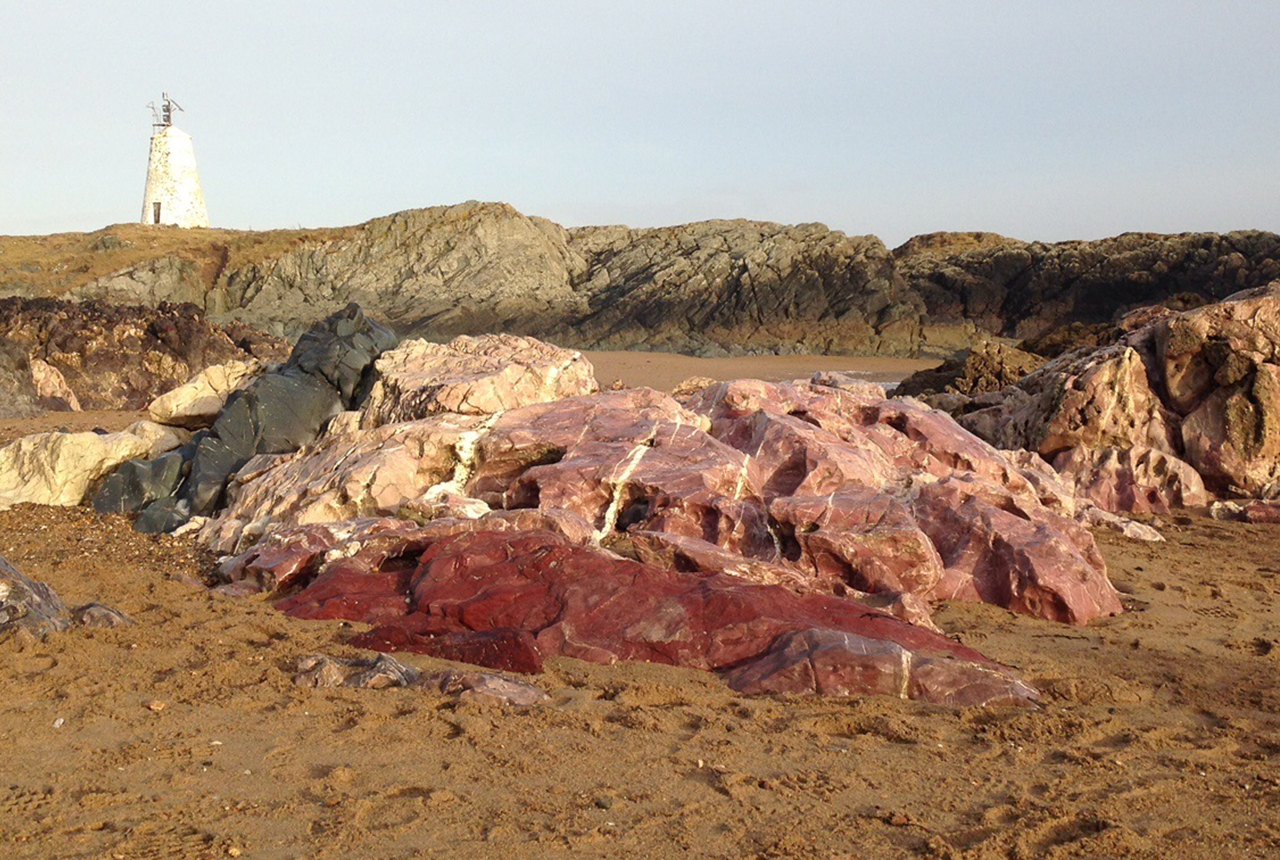Parts of UK listed among world’s most important geological sites
Parts of Wales, Scotland and Northern Ireland have been named among 100 of the world’s most important geological sites by UNESCO and international scientists.
25/10/2022 By BGS Press
The First 100 IUGS Geological Heritage Sites list names key geological sites of international scientific relevance that have made a substantial contribution to the development of geological sciences through history.
The UK sites are:
- Siccar Point, Scotland
- Giant’s Causeway and Causeway Coast, Northern Ireland
- Moine Thrust, Scotland
- Ynys Llanddwyn Mélange, Wales
The selections have been made from right across the world and include other well-known sites such as the Grand Canyon (USA), Sugar Loaf Mountain (Brazil) and Mount Everest (Nepal). Whilst many have helped to develop the science of geology, others are the world’s best examples of geological features and processes.
The list was drawn up by the International Union of Geological Sciences (IUGS), one of the largest international geoscience organisations in the world, together with UNESCO.
The identification of the top 100 sites was part of a project that involved more than 200 specialists from almost 40 nations and ten international organisations.
There were a number of sites from across the UK put forward as part of the list, with nominations coordinated by representatives from BGS and the environment agencies from the four regions of the UK.
Dr Kirstin Lemon of the Geological Survey of Northern Ireland (GSNI) was among the panel of international experts to evaluate more than 181 nominated sites.
It’s fantastic that the international geoscience community has given visibility to these sites, which recognises their importance for the development of geological science.
These sites are some of the world’s best demonstrations of geological features and processes and contribute to our understanding of the Earth’s formation through time. Now they are officially recognised as holding the highest scientific value.
Dr Kirstin Lemon, GSNI.
The full list of global sites will be revealed at a special IUGS event in Spain this week.
Siccar Point
Siccar Point, off the coast near Eyemouth, Scotland, is a world-famous place of geological interest. Its historical importance was established in 1788 by James Hutton, when he discovered the near-vertical layers of sedimentary rock, which enabled him to describe deposition, folding and erosion, some of Earth’s most fundamental geological processes that form the landscapes we know today. Hutton’s account, according to Scottish Geology, describes Siccar Point as ‘looking so far back into the abyss of time’.
Giant’s Causeway and Causeway Coast
The Giant’s Causeway and Causeway Coast World Heritage Site was selected primarily for its role in the development of geology as a science, representing a key site in proving the origin of volcanic rocks during the 18th century. It was nominated jointly by GSNI, the Northern Ireland Environment Agency and Trinity College Dublin due to its importance.
Moine Thrust
The Moine Thrust is the main geological structure in the North West Highlands, made up of a sequence of Precambrian metasedimentary rocks. Known informally as ‘the Moine’, it has attracted geologists from all over the world for well over a hundred years. The site is the focus of many influential studies, all helping to advance understanding of structural geology and thrust tectonics. It was here in the early 1880s that Charles Lapworth demonstrated that the sequence of rocks was not a simple stratigraphic order, but was repeated by folds and faults.
Ynys Llanddwyn Mélange
The Ynys Llanddwyn Mélange is part of Newborough National Nature Reserve and Forest and located within the GeoMon UNESCO Global Geopark. ‘Mélange’ is the name given to the chaotic body of mixed rocks at this location including limestone, cherts and pillow lavas . It was here that the term was first used, over 200 years ago, and debates as to how mélanges form are still ongoing to this day.
The Geological Survey of Northern Ireland (GSNI) is part of the Department for the Economy (DfE) Northern Ireland. It is staffed by scientists from BGS under contract to DfE, which allows GSNI to call upon expertise from other parts of BGS. As the regional source of geological information, GSNI advises industry, local government and the public on a range of geological matters, and provides geoscience information and services to inform decision making.
The International Union of Geological Scientists (IUGS) represents over one million geoscientists and 121 nations, and is one of the world’s largest scientific organisations. IUGS’s aims are:
- to promote the development of the earth sciences through the support of broad-based scientific studies relevant to the entire Earth system
- to apply the results of these and other studies to preserving Earth’s natural environment, using natural resources wisely and improving the prosperity of nations and the quality of human life
- to strengthen public awareness of geology and advance geological education in the widest sense



